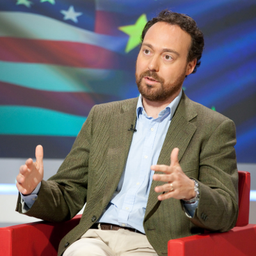
Federico Steinberg
Senior Analyst at Real Instituto elcano Blog
Prince of Asturias Professor @georgetownsfs /Senior Fellow @rielcano /Visiting Fellow @csis /Econ Professor @Uam_madrid (on leave) @steinbergf.bsky.social
Articles
-
1 week ago |
realinstitutoelcano.org | Miguel Otero Iglesias |Federico Steinberg
Ideas claveLas políticas proteccionistas de Trump, junto a su injerencia en la Reserva Federal y el aumento del déficit estadounidense, han generado una pérdida de confianza internacional en el dólar como activo seguro y moneda de reserva global. La UE carece del poder monetario del que goza EEUU, lo que la hace vulnerable en un contexto de rivalidad geopolítica. La emisión permanente de eurobonos sería clave para financiar bienes públicos comunes y reducir la dependencia del dólar.
-
2 weeks ago |
expansion.com | Federico Steinberg
-
2 weeks ago |
expansion.com | Federico Steinberg
Las caóticas políticas económicas estadounidenses y las necesidades de inversión europeas parecen haber creado una ventana de oportunidad para una emisión considerable de eurobonos. Trump está poniendo patas arriba los mercados financieros internacionales. Sus políticas proteccionistas están generando enorme volatilidad e incertidumbre.
-
3 weeks ago |
csis.org | Federico Steinberg |Miguel Otero-Iglesias
The Trump administration’s protectionist “tariff wars” and its “One Big Beautiful Bill” budget proposal, which, if approved, would significantly increase the U.S. deficit and public debt, have once again sparked debate about the potential erosion of the dollar’s status as the undisputed global hegemonic currency. Investors and central banks appear to be applying a risk premium to U.S. public debt due to the radical economic policies coming out of the White House.
-
1 month ago |
realinstitutoelcano.org | Ignacio Molina |Federico Steinberg
En 1985, España celebró con una firma la culminación de su larga marcha hacia Europa. Así se convertía en el duodécimo socio de las entonces llamadas Comunidades Europeas. El Real Instituto Elcano contribuye al aniversario con este especial como centro de referencia en el estudio de la participación de España en la UE.
Try JournoFinder For Free
Search and contact over 1M+ journalist profiles, browse 100M+ articles, and unlock powerful PR tools.
Start Your 7-Day Free Trial →X (formerly Twitter)
- Followers
- 11K
- Tweets
- 22K
- DMs Open
- No

RT @miotei: #Trump nos está demostrando lo vulnerables que somos. Frente a esto la UE tiene que lograr una mayor independencia, como ha dec…

RT @rielcano: La inestabilidad geopolítica anima a Europa a reforzar su soberanía, también en lo monetario. Con la pérdida de credibilidad…

RT @miotei: Una mayor independencia de EEUU para por emitir más eurobonos. Aquí mi análisis con @Steinbergf.